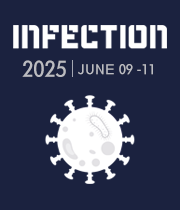Title : The genetic diversity and allele frequencies of MSP-1, MSP-2 and glutamtew rich protein of P. falciparum and consequence on malaria control in some parts of Cross River State, Nigeria
Abstract:
The genetic diversity and allele frequencies of MSP-1, MSP-2 and glutamtew rich protein of P. falciparum and consequence on malaria control was investigated in some parts of Cross River State, Nigeria. A total of 230 finger prick samples of blood were examined for the presence of Plasmodium species using microscopy.About 5ml of venous blood was collected into Ethylenediamine-tetraacetic acid bottle for PCR. Nested PCR was used to determine the different genes variants. A structured questionnaire was used to collect sociodemographic and socioeconomic data of the participants. The prevalence of malaria infection in the study was 34.7% by microscopy and 40.8% by PCR. The difference in the diagnosis of malaria as determined by microscopy and PCR was statistically insignificant (P = 0.2885).The difference in the prevalence of malaria in the Local Government Areas used in the study was also not statistically significant (P = 0.7003). However the variation in infection based on gender using microscopy was significant (p = 0.0441). Female subjects were more infected 49(29.3%) than Males 31(27.4%). The difference in the prevalence of malaria infection by age of subjects was statistically significant (P = 0.000). Subjects aged 5 years and below had the highest malaria infection 5(55.5%) while those aged 16-20 years had the least 4(19.0%) by microscopy. The occurrence of malaria parasitaemia using PCR by age showed that subjects aged 5 years and below had the highest infection rate 4(44.4%) whereas subjects aged 16-20 years had the least infection rate of 5(23.8%). Of the 100 samples amplified with nested PCR at different molecular base pair, 48% were positive for MSP I, 42% were positive for MSP II, whereas 36% were positive for GLURP proteins. Bakasi Local Government Area had the highest frequency of genes variants in the study compared to other LGAs. Fifteen percent (15%) of the subject harbours more than one gene. The rainy season had a higher occurrence of Plasmodium infection and gene variants. This study point to a potential resistance to antimalarial due to the detection of parasites with genetic mutations that confer reduced susceptibility.


